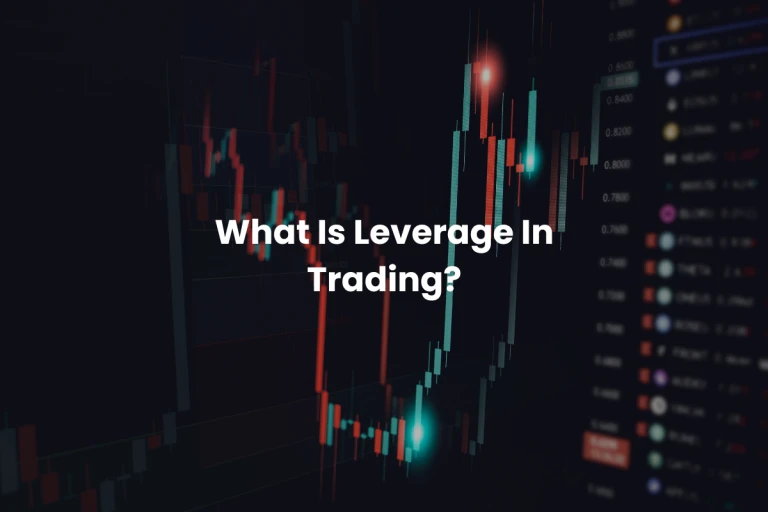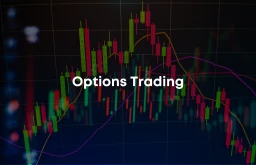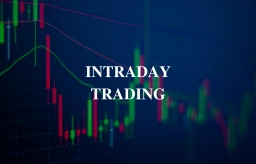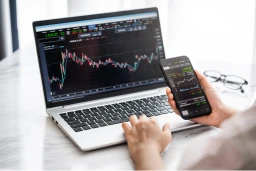What is Leverage in Trading? Everything you need to know!
Leverage trading, also known as margin trading, is a method of trading financial instruments where you can amplify the size of your position without having to invest the full value of the position. In other words, it involves borrowing funds to increase the size of a trading position beyond what would be possible with your capital alone.

What Is Margin?
When we talk about borrowing funds in the context of leverage trading, it means that traders are essentially taking a loan from their broker to increase the size of their trading position beyond the amount of money they have in their trading account. This loan, or borrowed amount, is often referred to as margin.
Potential for Higher Returns And Higher Risk
Leverage magnifies both gains and losses. If the market moves in the direction you anticipated, your returns are amplified. However, if the market moves against you, losses are also magnified.
It's crucial to understand that while leverage can enhance profits, it also increases the risk of significant losses.
What are Margin Calls?
To protect against excessive losses, brokers set a minimum amount of capital that must be maintained in the trading account, known as the maintenance margin.
If the value of your position drops to a level close to this maintenance margin, you may receive a margin call. This means you either have to deposit more funds or close some or all of your positions to restore the required margin.
What is a leverage ratio?
The leverage ratio measures how much of a trade's total value is compared to the money you need to put in. It depends on what market you're trading, who you're trading with, and how big your trade is.
For instance, with a 10% margin, you could control the same amount in the market as if you invested $1000, but you only need to put in $100. This creates a leverage ratio of 10:1.
In markets that are more unpredictable or not as easy to trade, the offered leverage is usually lower. This helps safeguard your investment from sudden price changes. In contrast, very liquid markets like forex might offer higher leverage ratios.

Explore comprehensive trading strategies and insights with Mint CFD, a trusted partner in CFD trading.
What Markets Available for Leverage Trading?
Leverage trading is a versatile strategy employed across different financial markets, allowing traders to amplify their exposure to various types of assets. Such as:
Stocks
Forex(Foreign Exchange)
Commodities
Cryptocurrencies
Derivatives
ETFs
Indices
Also read: How to Increase Your Credit Card Limit?
Leverage Trading: An Example
In traditional trading, if you want to buy, for example, $10,000 worth of a financial instrument, you would need to have $10,000 in your account.
With leverage, you might only need to put up a fraction of the position size, say 5% or 10% (this is known as the margin requirement). So, using 10x leverage, you could control a $10,000 position with only $1,000 of your own capital.
With 10:1 leverage, you can control a position size of up to $10,000 (10 times your own capital).
So, with your $1,000, you could potentially enter a trade that has an overall value of $10,000.
Benefits and Risks of Leveraging in Trading
Benefits
Magnified Profits: Leverage allows you to amplify your potential gains by investing only a fraction of the trade's total value, yielding similar profits to conventional trades.
Gearing Opportunities: Utilizing leverage frees up capital that can be redirected to other investment opportunities, a concept known as gearing.
Shorting the Market: Leverage enables speculation on both rising and falling markets, allowing you to benefit from downward market movements (going short).
24-Hour Dealing: Certain markets, such as key indices and forex, are accessible for trading around the clock, providing flexibility in trading hours.
Risks
Magnified Losses: While leverage enhances profits, it also amplifies losses. Given the smaller initial investment in comparison to conventional trades, it's crucial to remain mindful of the total capital at risk.
Funding Charges: Leveraged trading involves borrowing funds to open positions, and keeping positions open overnight may incur charges to cover the costs of this borrowed capital.
No Shareholder Privileges: When leveraging, you forgo the ownership rights associated with the underlying asset.
Margin Calls: If the market moves against your position, your provider may request additional funds to maintain the trade, known as a margin call. This requires either adding capital or closing positions to manage overall exposure.
Follow us on Instagram.









